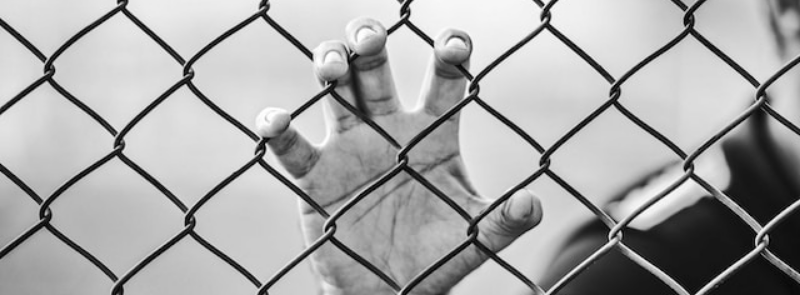
When It Occurs
Annually Third Friday of September
Timeline
Days Passed (836)
# Hashtags
#NationalPOWRecognitionDay #PrisonersOfWar
National POW/MIA Recognition Day is observed annually on the third Friday of September. This dedicated day pays homage to the dedication and sacrifices of our nation's prisoners of war and those still missing in action, along with their families. As part of this commemoration, Americans are urged to pause and contemplate the sacrifices made by military personnel who are imprisoned or unaccounted for due to their service.
To show support, individuals and businesses are encouraged to display POW/MIA flags. The Legion maintains its unwavering commitment to achieving a full accounting of all U.S. servicemembers from various war eras who are either imprisoned or listed as missing in action. This commitment includes advocating for the return of living POWs, repatriation of the remains of fallen soldiers from war zones abroad, or a determination through compelling evidence when neither option is feasible, as outlined in Resolution 22 from the 99th National Convention.
History of National POW/MIA Recognition Day
- Origins: National POW/MIA Recognition Day was established by Congress in 1979 to honor American service members who were prisoners of war or went missing in action during their service. It was created to raise awareness about the efforts to account for these individuals and to support their families.
- First Observance: The first National POW/MIA Recognition Day was observed on July 18, 1979. It was later moved to the third Friday in September to avoid conflicts with other observances and to allow for a greater focus on the recognition of POWs and MIAs.
Significance of National POW/MIA Recognition Day
- Honor and Remembrance: The day honors the bravery and sacrifice of POWs and MIAs and acknowledges the suffering and uncertainty faced by their families.
- Raising Awareness: It raises public awareness about the ongoing efforts to account for and repatriate POWs and MIAs, ensuring that they are not forgotten.
- National Commitment: The observance underscores the nation’s commitment to seeking the return of all service members and to providing support to their families.
How to Observe National POW/MIA Recognition Day
-
Ceremonies and Events:
- Official Ceremonies: Attend or watch official ceremonies held at military installations, war memorials, and government buildings. These ceremonies often include speeches, moments of silence, and the laying of wreaths.
- Community Events: Participate in local community events such as parades, candlelight vigils, and educational programs that honor POWs and MIAs.
-
Flying the POW/MIA Flag:
- Display the Flag: Fly the POW/MIA flag at your home, business, or community center. The flag is a powerful symbol of the nation’s commitment to accounting for missing service members.
- Understanding the Symbolism: Learn about the symbolism of the POW/MIA flag, which features a silhouette of a prisoner of war before a guard tower and barbed wire, with the words “You Are Not Forgotten.”
-
Educational Activities:
- Classroom Lessons: Educators can incorporate lessons about the history and significance of POW/MIA Recognition Day into their curriculum, teaching students about the sacrifices of POWs and MIAs.
- Documentaries and Books: Watch documentaries and read books that tell the stories of POWs and MIAs. This can provide a deeper understanding of their experiences and the importance of the day.
-
Supporting Organizations:
- Veterans' Organizations: Support organizations that work to account for POWs and MIAs and provide assistance to their families, such as the National League of POW/MIA Families and the Defense POW/MIA Accounting Agency (DPAA).
- Volunteering: Volunteer with local veterans’ organizations or participate in activities that support veterans and their families.
-
Moments of Silence and Reflection:
- Observe a Moment of Silence: Take a moment of silence to honor and remember those who were POWs or are still MIA, reflecting on their sacrifices and the impact on their families.
- Personal Reflection: Spend time reflecting on the significance of the day and the importance of remembering and honoring these brave individuals.
Fun Facts and Additional Information
- POW/MIA Flag: The POW/MIA flag was designed by Newt Heisley in 1971. It is the only flag, besides the United States flag, that has been flown over the White House.
- Number of MIAs: As of 2021, more than 81,600 American service members remain unaccounted for from World War II, the Korean War, the Vietnam War, the Cold War, and the Gulf Wars.
- Defense POW/MIA Accounting Agency: The DPAA is a U.S. Department of Defense agency dedicated to recovering missing personnel from past conflicts and providing answers to their families.
Inspirational Quotes
- “No man left behind.” – U.S. Military Motto
- “You are not forgotten.” – Inscription on the POW/MIA Flag
- “A nation reveals itself not only by the men it produces but also by the men it honors, the men it remembers.” – President John F. Kennedy
Conclusion
National POW/MIA Recognition Day is a solemn and significant observance that honors the sacrifices of American prisoners of war and those who are missing in action. It is a day to remember their bravery, acknowledge the suffering of their families, and reaffirm the nation’s commitment to bringing them home. Whether through ceremonies, educational activities, flying the POW/MIA flag, or supporting relevant organizations, there are many meaningful ways to observe this important day and ensure that these heroes are never forgotten.


